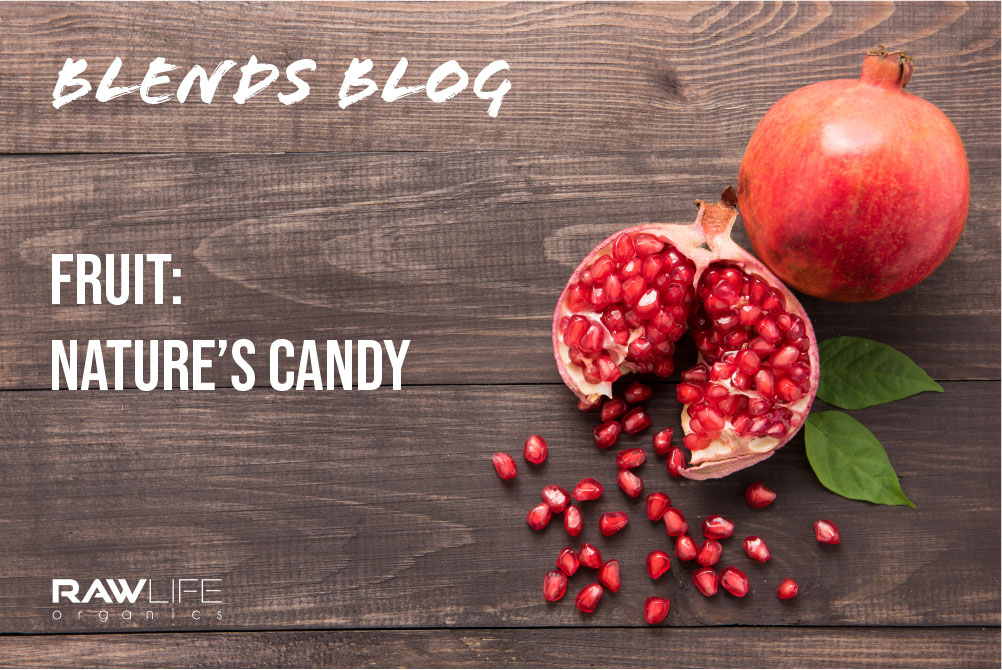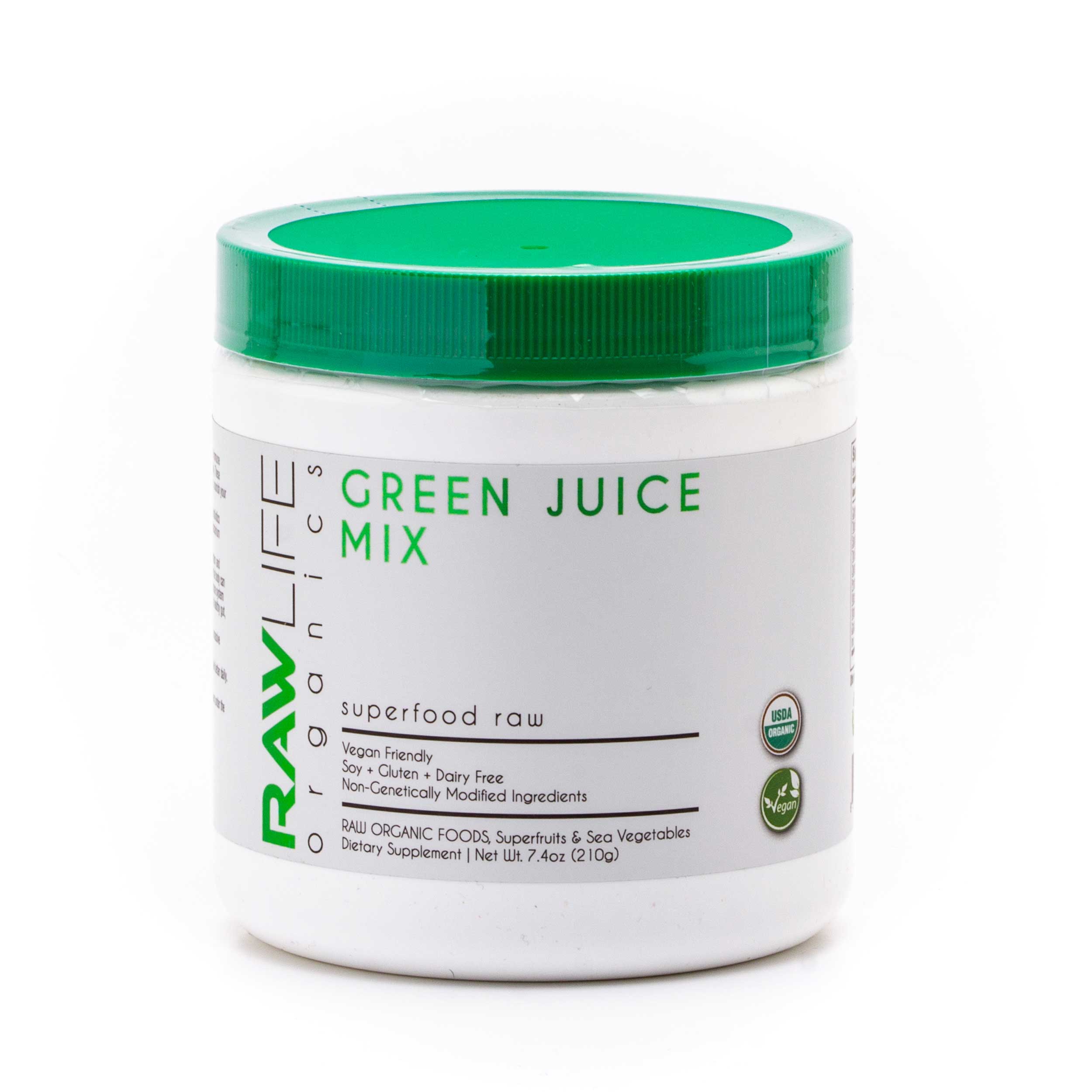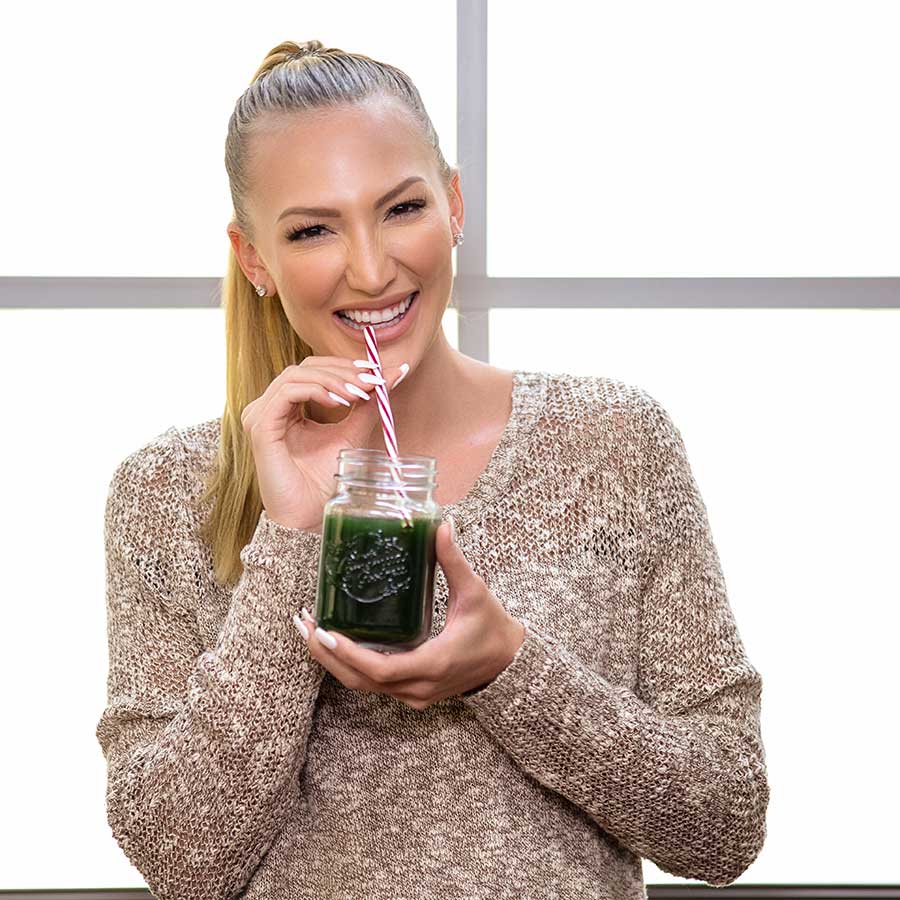Next up in our Blends Blog series is our fruit blend, packed with the most potent and essential fruit-derived nutrients. Pass on the fruit loops – you need the real stuff, and here’s why.
In 2017, the Center for Disease Control and Prevention reported that only 12.2% of the adults were eating enough fruit – enough meaning 1.5 cups per day, as outlined in the Dietary Guidelines for 2015-2020 [1].
This is a shame, not only because fruit is tasty, but it serves our bodies with vitamins, minerals, antioxidants, and lots of fiber. Not convinced? Let’s take a look at just how powerful they are in keeping you healthy.
You’ll notice that antioxidants will be a common component in each of these fruits we’ve chosen to include in our Superfood Raw drink. These substances assist the body in ridding itself of toxins that can damage cells and lead to deeper health issues. You’ll see a lot of crossover in their vitamin and mineral content as well, but each has its own special contribution to our mix of greens, sea veggies, probiotics, and fruits:

Acai
Acai is a well-known superfood with a long list of reasons why you should be consuming them every day. We included it in our green juice because it’s not necessarily a berry you’d find easily at the store, and it’s most often available in powder form anyway. These berries, harvested from acai palm trees, are said to have antioxidants that help with cognitive health, heart health, inflammation, and may even prevent an increase in cancer cells and limit the formation of tumors [2]. Acai berries contain vitamin A, calcium, and small amounts of other minerals like potassium, zinc, and magnesium.
Apple
Although we’d all probably prefer them in pie form, apples are a nutrition-packed form of nature’s candy all on their own. With a good dose of fiber, they can help with weight management by keeping us full and may help manage cholesterol levels. Plus, their vitamin C, potassium, and antioxidant properties support our bodies in multiple ways. These antioxidants specifically are called polyphenols, which help with lowering the risk of cardiovascular disease and blood pressure, and potentially maintaining healthy digestion [3].


Blackberry
Blackberries are packed with vitamins A, C and K, fiber, and antioxidants. Collectively, they support the immune system, blood clotting, and skin conditions, digestion, and fight toxins called free radicals that cause damage to cells in the body linked to various diseases, including cancer. You’ll see this is a common factor amongst most berries, which also means they each could play a role in improving cognitive skills as we age [4].
Raspberry
Raspberries are another vitamin C-packed fruit, but also contain two other powerful antioxidants called quercetin and egallic acid. These are said to help fight cancer cells [5]. They also contain vitamin E, selenium, beta-carotene, to name a few antioxidants, as well as flavonoids. Flavonoids are plant metabolites that have similar effects as antioxidants [6]. With raspberries, your body will love the B vitamins, vitamins E and K, and minerals like manganese, magnesium, potassium, copper, and iron.


Blueberry
Arguably one of the most utilized fruits in our kitchens, blueberries have been coveted as a superfood for years now. Like raspberries, they are full of flavonoids and antioxidants that may help prevent cell damage or tumor growth. Blueberries offer vitamins B6, C and K, and minerals like phosphorus, calcium, magnesium, manganese, zinc, and iron. These properties contribute to healthy bones, skin, and heart.
Strawberry
Strawberries are another vitamin C bomb – no surprise here – and antioxidants that put cancer lower on the list of potential health issues for those who consume proper amounts. Other notable nutrients are iron, folate, magnesium, phosphorus, and vitamin A. Berries, in general, will contribute polyphenols, which are plant compounds that help reduce the risk of heart disease and diabetes. Their high potassium and fiber also play a large role in this.


Cranberry
Cranberries shouldn’t be limited to your mixed drinks or a sauce on Thanksgiving Day. This super berry gets credit for helping with immune function, as it carries vitamins C, E, A, K1, manganese, and copper. Studies showed that cranberry might help manage systolic blood pressure and body mass index, thereby lowering risk for cardiovascular disease [7] and also potentially slowing the growth of or kill off cancer cells [8].
Goji
A popular berry amongst health foodies, the goji berry offers a heavy dose of – you guessed it – antioxidants that help fight inflammation, as well as free radicals and oxidative stress they can bring on. Goji berries may also prevent cancer by inhibiting tumor growth, help with anti-aging, and liver damage [9]. Its beta-carotene phytochemical also contributes to skin health.


Acerola
This is probably one of the only ingredients you may not have heard of, but you’ll be happy you have now. Acerola is also referred to as a Barbados cherry and is known for containing phytonutrients and absorbic acid. These could potentially help with detoxification, repairing DNA damage, and increased immunity. Acerola is noted for its high concentration of Vitamin C, which supports a healthy immune system – nearly 50-100 times more than an orange [10].
Pomegranate
Pomegranates are one of the most difficult fruits to eat, but there are too many potential health benefits to let that stop us from making it a part of our greens drink. They have vitamin K and C, potassium, and folate, which are the most significant nutrients that draw us to this complicated yet delicious fruit. These vitamins and minerals help lower inflammation [11], fight diseases, and maintain sturdy bones.

So why not just eat these fruits whole?
By no means are we saying you should skip eating fruits in their purest, raw form, but as data shows, adults have a difficult time fitting in the recommended amount of fruit per day. And despite what the internet might shout at you about fruit sugar being “bad” for you, clearly, those individuals are missing out on a fountain of benefits – not to mention, fruit sugar has a mcuh different effect on the body than refined and processed sugars.
We get it – fruit can be expensive, and some aren’t in-season and fresh for a good portion of the year. Superfood Raw is how we combat these issues by offering a solution to getting a daily dose of these fruits with no hassle, less cost, and at any time of the year.
References:
- “Only 1 in 10 Adults Get Enough Fruits or Vegetables.” Centers for Disease Control and Prevention, Centers for Disease Control and Prevention, 16 Nov. 2017, https://www.cdc.gov/media/releases/2017/p1116-fruit-vegetable-consumption.html
- Webb, Denise. “Anthocyanins.” Today’s Dietitian, Mar. 2014, https://www.todaysdietitian.com/newarchives/030314p20.shtml
- Bondonno, Nicola P., et al. “The Cardiovascular Health Benefits of Apples: Whole Fruit vs. Isolated Compounds.” Trends in Food Science & Technology, vol. 69, 29 Apr. 2017, pp. 243–256.
- “Strong Scientific Evidence That Eating Berries Benefits the Brain.” American Chemical Society, Journal of Agricultural and Food Chemistry, 7 Mar. 2012, https://www.acs.org/content/acs/en/pressroom/presspacs/2012/acs-presspac-march-7-2012/strong-scientific-evidence-that-eating-berries-benefits-the-brain.html.
- Zhang, Hong-Mei et al. “Research progress on the anticarcinogenic actions and mechanisms of ellagic acid.” Cancer biology & medicine vol. 11,2 (2014): 92-100.
- Bradish, Christine M., et al. “Comparison of Flavonoid Composition of Red Raspberries (Rubus Idaeus L.) Grown in the Southern United States.” Journal of Agricultural and Food Chemistry, vol. 60, no. 23, 2011, pp. 5779–5786., doi:10.1021/jf203474e.
- Pourmasoumi, Makan, et al. “The Effects of Cranberry on Cardiovascular Metabolic Risk Factors: A Systematic Review and Meta-Analysis.” Clinical Nutrition, 11 Apr. 2019, doi:10.1016/j.clnu.2019.04.003.
- Weh, Katherine M et al. “Cranberries and Cancer: An Update of Preclinical Studies Evaluating the Cancer Inhibitory Potential of Cranberry and Cranberry Derived Constituents.” Antioxidants (Basel, Switzerland) vol. 5,3 27. 18 Aug. 2016.
- Cheng, Jiang et al. “An evidence-based update on the pharmacological activities and possible molecular targets of Lycium barbarum polysaccharides.” Drug design, development and therapy vol. 9 33-78. 17 Dec. 2014.
- Prakash, Anand, and Revathy Baskaran. “Acerola, an untapped functional superfruit: a review on latest frontiers.” Journal of food science and technology vol. 55,9 (2018): 3373-3384.
- Ellulu, Mohammed S et al. “Effect of vitamin C on inflammation and metabolic markers in hypertensive and/or diabetic obese adults: a randomized controlled trial.” Drug design, development and therapy vol. 9 3405-12. 1 Jul. 2015.
ON THIS BLOG
Superfood Raw Green Juice Mix
$39.99
Get Nature’s Most Powerful Superfoods in one scoop and 30 seconds a day without all the hassle and expenses of juicing. Now you can be confident that you are getting everything you need for optimal health!
- Increase Overall Energy
- Reduce / Eliminate Bloating
- Support Gut Health
- Empower Your Immunity




